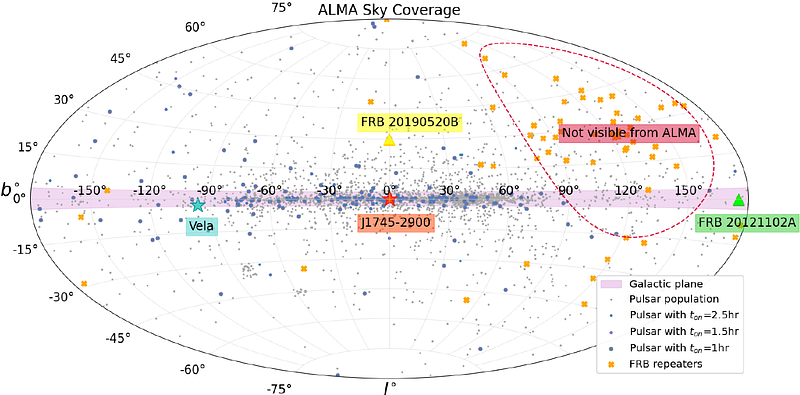Observing radio transients with Phased ALMA: Pulses from the Galactic Centre magnetar

Observing radio transients with Phased ALMA: Pulses from the Galactic Centre magnetar
J. Vera-Casanova, M. Cruces, K. Liu, J. Wongphexhauxsorn, C. A. Braga, M. Kramer, P. Torne, P. Limaye, M. C. Espinoza-Dupouy, L. Rodriguez
AbstractRadio transients, such as pulsars and Fast Radio Bursts (FRBs), are primarily detected at centimetre radio wavelengths, where higher luminosities are found. However, observations of sources in dense environments are heavily affected by propagation effects which may hinder a detection. Millimetre wave observations bypass this complication but require the largest radio telescopes to compensate for the lower flux densities. When used in phased mode, the ALMA radio telescope provides an equivalent dish size of 84m, being the most sensitive instrument at mm/sub mm. With its high time resolution it offers a unique opportunity to study radio transients in an unexplored window. We study the Galactic Centre (GC) magnetar, PSR J1745$-$2900, as a laboratory for magnetars in complex magneto-turbulent environments and to link with FRBs. We showcase the potential of ALMA in phased mode to observe radio transients and to achieve, for some sources, the first ever detections outside the cm wave range. We studied the GC magnetar using ALMA archival data of Sgr A* at Band 3 from the 2017 GMVA campaign. We searched in intensity and classified the pulses based on their circular and linear polarisation properties and arrival phase. We detected eight pulses with energies in the range of 10$^{29}$ erg. We constructed its cumulative energy distribution and we fit a power law, where the event rate scales with energy as $R \propto E^{\gamma}$. The result is an exponent of $\gamma = -2.4 \pm 0.1$. With the $\gamma -$value and the system properties of phased ALMA, we estimate that over 160 known pulsars could be detected by ALMA. For repeating FRBs, observing during their peak activity window could lead to several detections. We expect that ALMA's lower frequency bands with polarisation capabilities, will serve as a pioneer on mm wave searches for pulsars and to study complex environments involving radio transients.